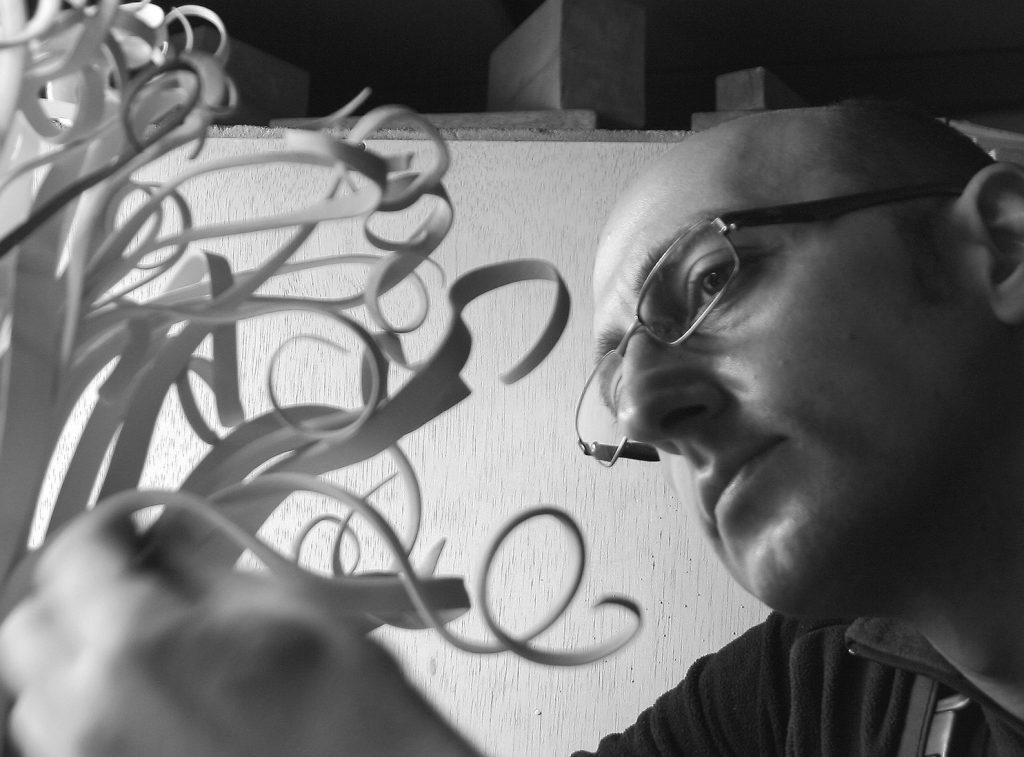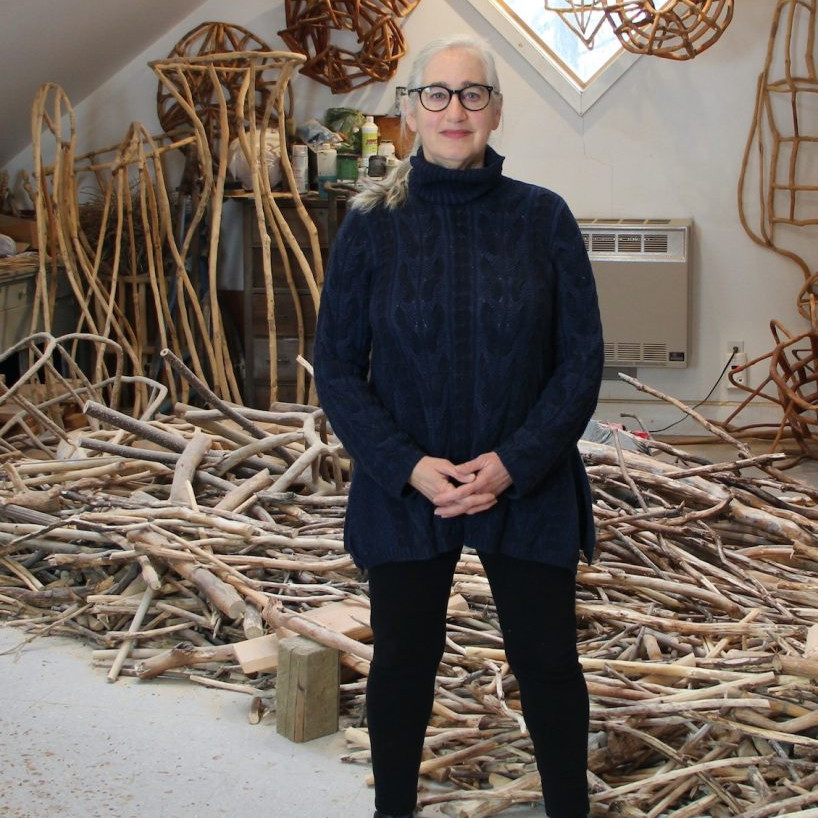Alberto Bustos Ceramic Sculptor - Valladolid , Spain
You started your artistic career as a painter, why did you feel the need to work in 3D?
When I was young I was interested all the artistic expressions: painting, photography, drawing… but I soon began to work in 3D and 2D made me feel limited. I needed more. One day I began to touch clay. and in this moment I felt the way. The contact my hands and the clay is final in my growth. For this reason I do not use any mechanical tool. Everything is made by hand directly.
3D open in me an infinite world of possibilities to work and to transmit my message: the vegetation of the planet suffers daily as a result of the degradation of the environment caused by humans.

“Ceramics pose challenges keeping my imagination alive.” Expand on this statement.
I think that Ceramics are one of the artistic disciplines technically more complex. There are endless work techniques, countless materials and manufacturing processes very, very long.
All this makes that my imagination is always very active, thinking of all the infinite artistic variations that can make to complete each work.
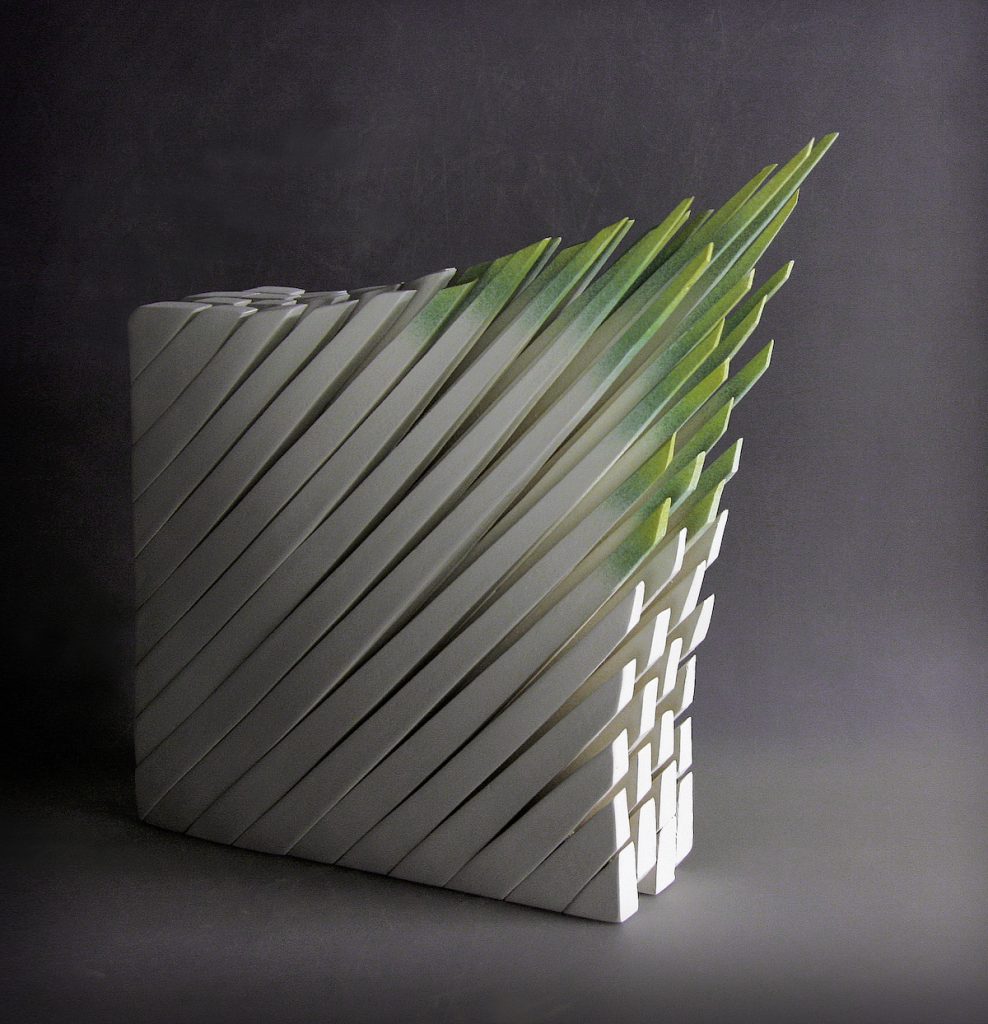
Can you explain what you mean by ‘natuRareza’?
“NatuRareza” is a pun on “nature” and “rarity”. You can not translate literally into English.
I developed my passion for nature as an adolescent and have loved it ever since. At secondary school, our Biology teacher used to take some students to the countryside every weekend – stars, minerals, flora and fauna fascinated me. With the years, I have become a passionate lover of mountaineering and nature in all its dimensions.
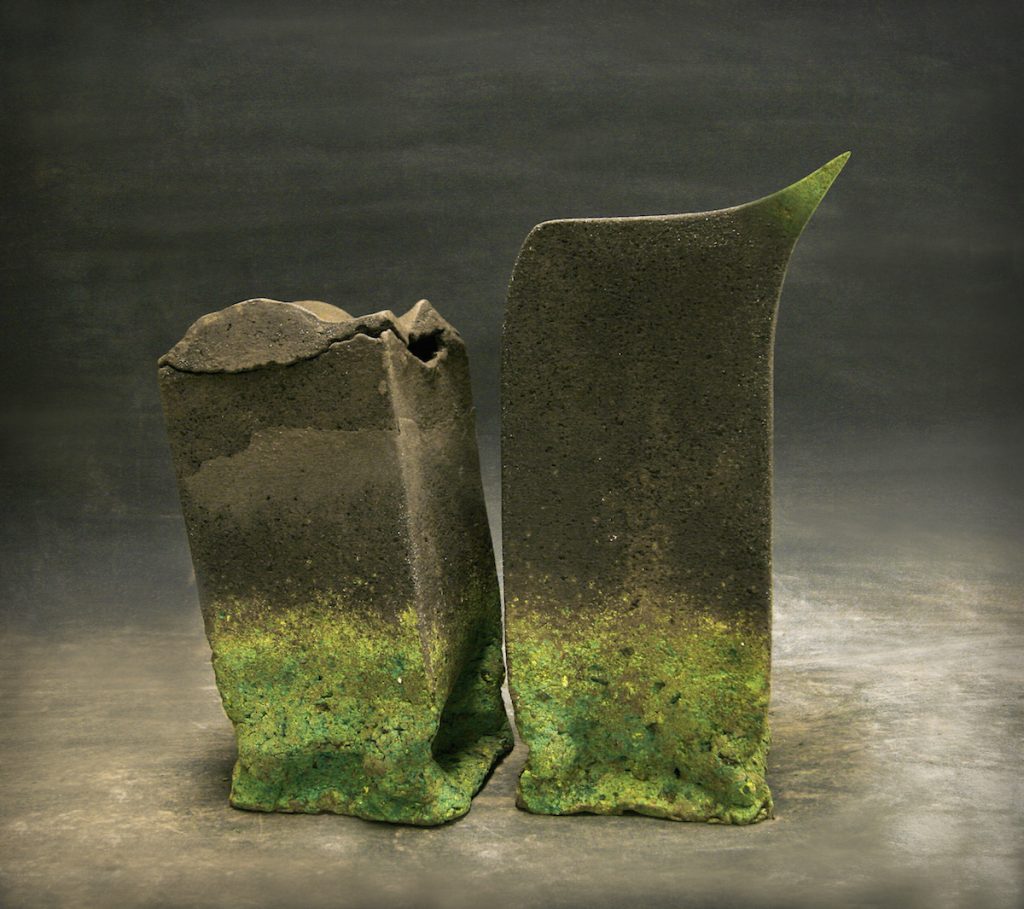
Nowadays, the deterioration of the natural environment created by humans is rather alarming; that is precisely the essence of my current work. I enter the vegetal psyche and show its worries, concerns, fears… but always with a certain tinge of hope.
I use very fragile and delicate elements to convey the vegetal essence and its physiognomy. My aim is to shake people’s conscience and invite reflection. I have been pleasantly fortunate to hear and share very different opinions on my work, which is highly satisfying. For me, the fact that my artwork conveys feelings, either positive or negative, and that it may stir the observer’s conscience, is success per se.
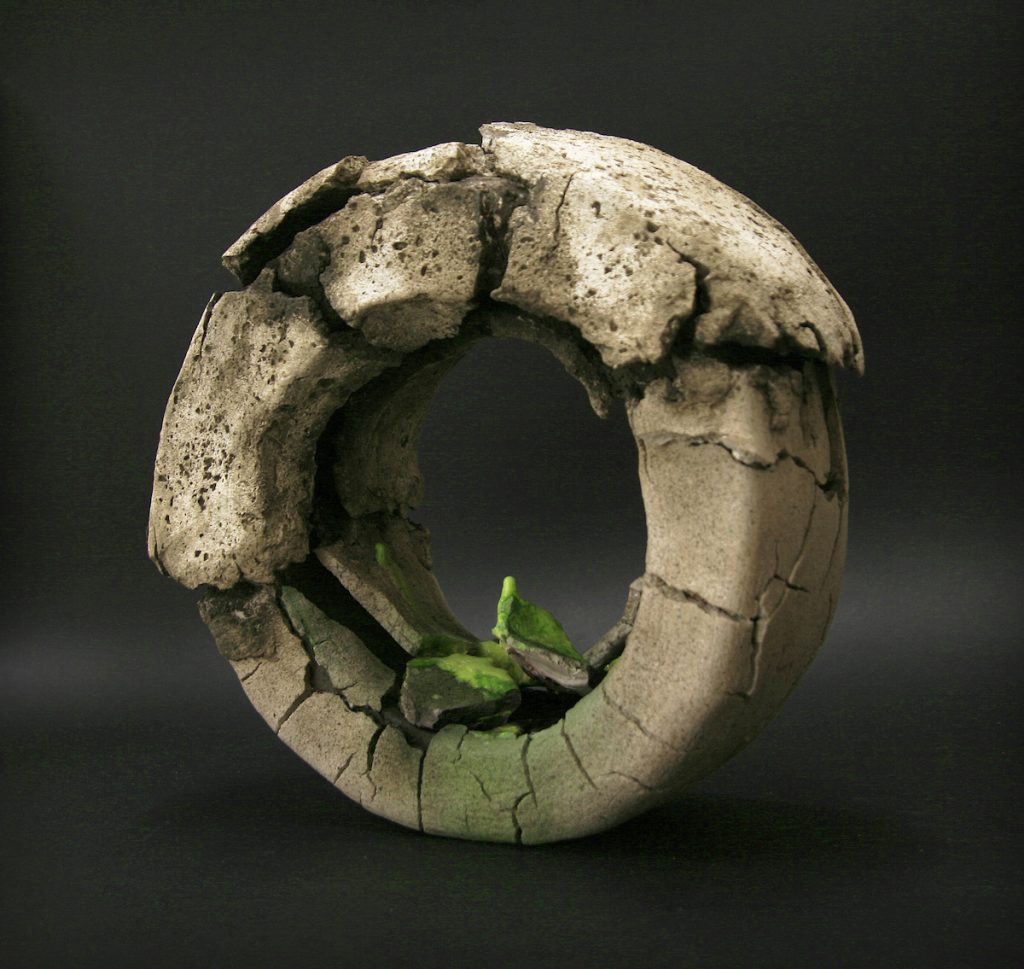
Can you briefly explain the technique of your current work?
First of all, I draw sketches on paper, a basic idea that is then directly developed on stoneware or porcelain. As my pieces are rather fragile, I work directly on the oven plate where I draw some lines to help me in the modelling process, thus avoiding moving the piece before putting it into the oven and reducing the risk of break.

Each segment is modelled individually but all of them are joined together quite quickly as drying does not take long.

Finally, a specific package is made for each piece. I usually joke about the fact that the production of each wooden box is more complicated than the artwork itself. The main body is fastened with wedges and air is the only protecting element since filaments cannot be touched by any spongy material, either bubble wrap or likewise.
My only tools are my hands.
I make filaments with my throwing technique. There are several videos in internet with little moments of my diary work. The main materials I use are porcelain and stoneware. Also pigments, glazes, etc.
I always work in high temperature in my little kiln.

Competitions and awards have played an important part in your ceramic career. Discuss the importance of winning 1st prize in the 34th International Ceramics competition of Alcora.
The prizes are always very important because it is a public recognition of my work and because they help the world may know me.
This was my second international prize. I am especially proud and I feel so lucky for the large number of participants in total that were competing with me and for the high quality of the finalists exposed.
However, luck is very important to win a contest.
When I work, I disengage myself from the surrounding world; but when I observe people’s looks and expressions when contemplating my work, I connect back to reality. And I love it: surprise, admiration, concern are among the range of emotions generated. As for opinions, there is a great disparity. There is a sense of constant movement, the idea of freedom, the reminiscence of sea flora…
I don’t usually explain my idea unless expressly requested. That way I allow people the chance to interpret my artwork freely, although I would like that my original statement of intent to be always present.
Tell us about the actual winning piece, ‘Vegetable Psyche’
“Vegetable Psyche” talks about the dichotomy that feels a plant in time to take vital decisions to continue to survive. Most white filaments choose a direction of flight. Some black filaments think that the direction is the opposite. Humans have gotten that vegetation has doubt.
Technically it is a work made in black and white stoneware.
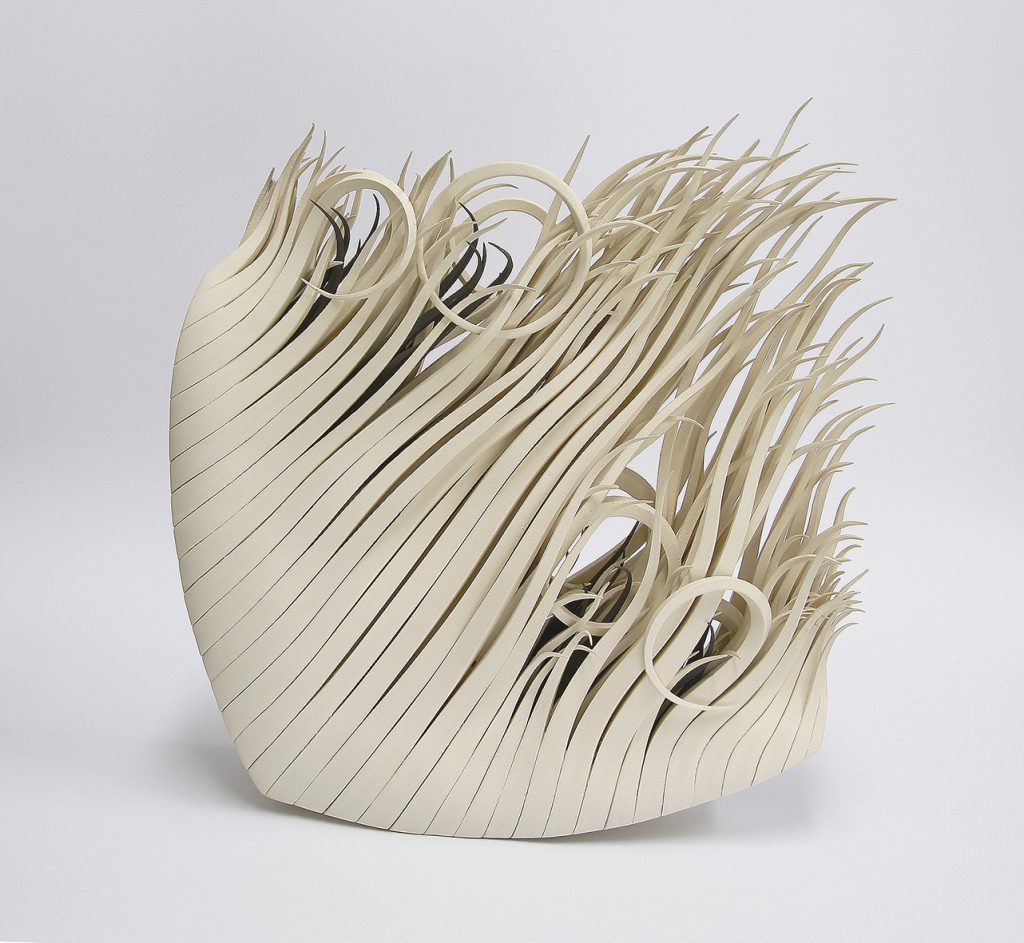
Vegetable Psyche
Explain the movement in your work.
The movement is very important to talk about my work.
It may be the wind but can also be the flight. The choice is for each person, what she feels to see the play. Art is freedom at all levels. And also, of course, the free interpretation by the viewer.
In ‘1, 2, 3, Dream’ there are multiple layers of both colour and form discuss.
This work represents a nightmare of a plant. Inside there is no oxygen, no light. He squirms struggling to survive.
Finally gets to go outside and get on with life.
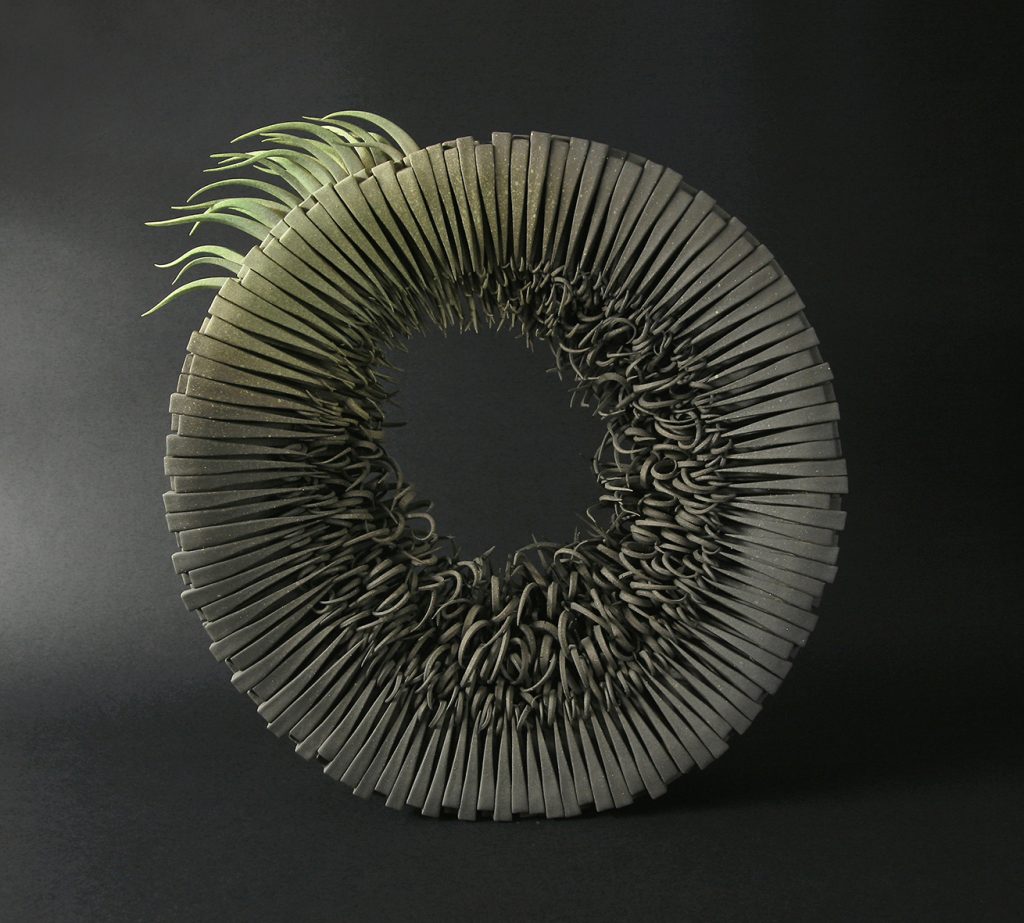
1, 2, 3, Dream
Nature is clo1, 2, 3, Dreamsely portrayed in ‘Lid’ but this is a complete perception of the viewer. What are some of the necessary elements that make this happen?
In “lid” I want to convey the direct struggle with the hostile environment.
She shows as the fragile vegetation struggles to find outlets for her freedom.
Also she shows life circumstances that any human could live. But there is always hope.
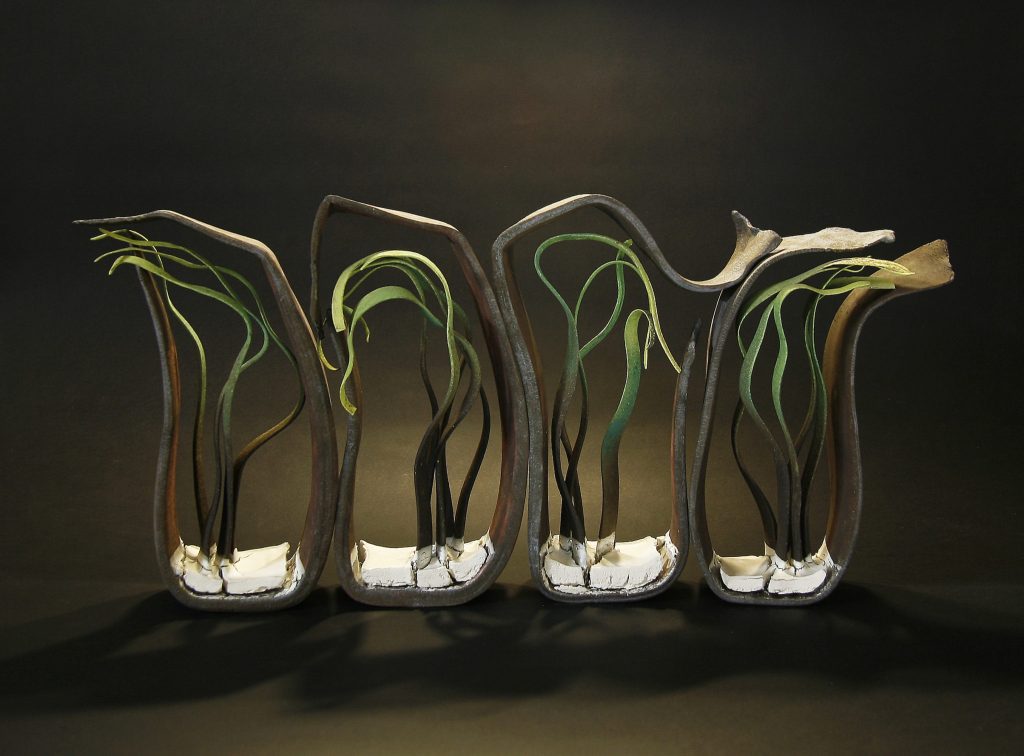
lid
In a piece such as ‘Piroquinesia’ the work is very delicate, how do you keep the fineness in your work without damage?
There is no technical secret, I try to work very carefully. I use many architectural structures to get keep the way I want.
When I finish the modeling I introduce work without drying in the oven, because so is easier, it still maintains its elasticity.
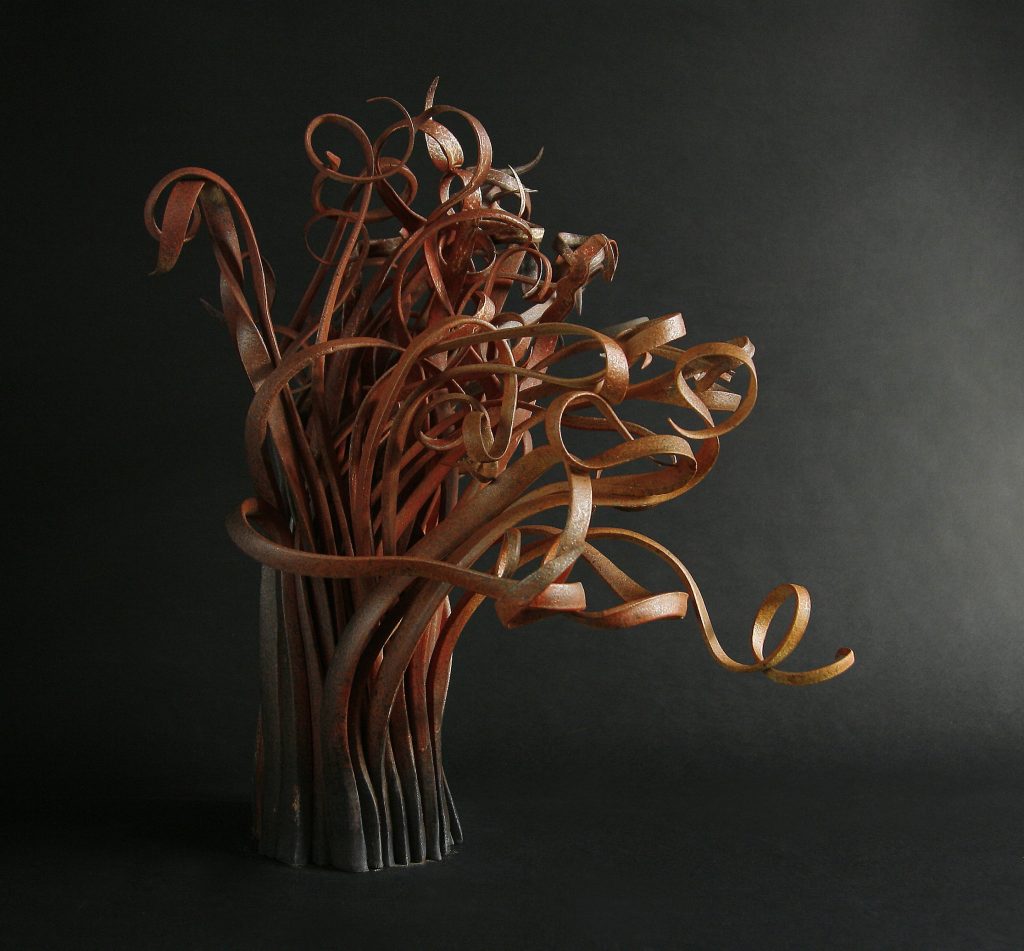
Balance is very important for the free standing of your work, discuss.
Yes, balance is very important.
Life in general is balance.
Being balanced is complicated, there are always factors that unbalance us. We must always be prepared and learn from the unbalancing moments.
This applies to humans but also to the nature.
At this time in history the environment is suffering greatly because humans are thereby insensitive steadily and continuously.
The pillars of my artwork have been forged in the solitude of my workshop, in the intimate complicity existing between ceramics, the oven and my hands.
Of course, none of this would have been possible without extensive reading and, above all, without the countless talks with colleagues.
Many of your pieces are framed with circles or squares, expand on this using, ‘Círculo Mortal Ártico’ and ‘Domar Esencia 2”
Yes, it is true.
In “Arctic Circle mortal”, vegetation is surrounded by degradation, pollution; humans who imprisons and limits their freedom. Finally vegetation manages to find the exit to light and to oxygen.
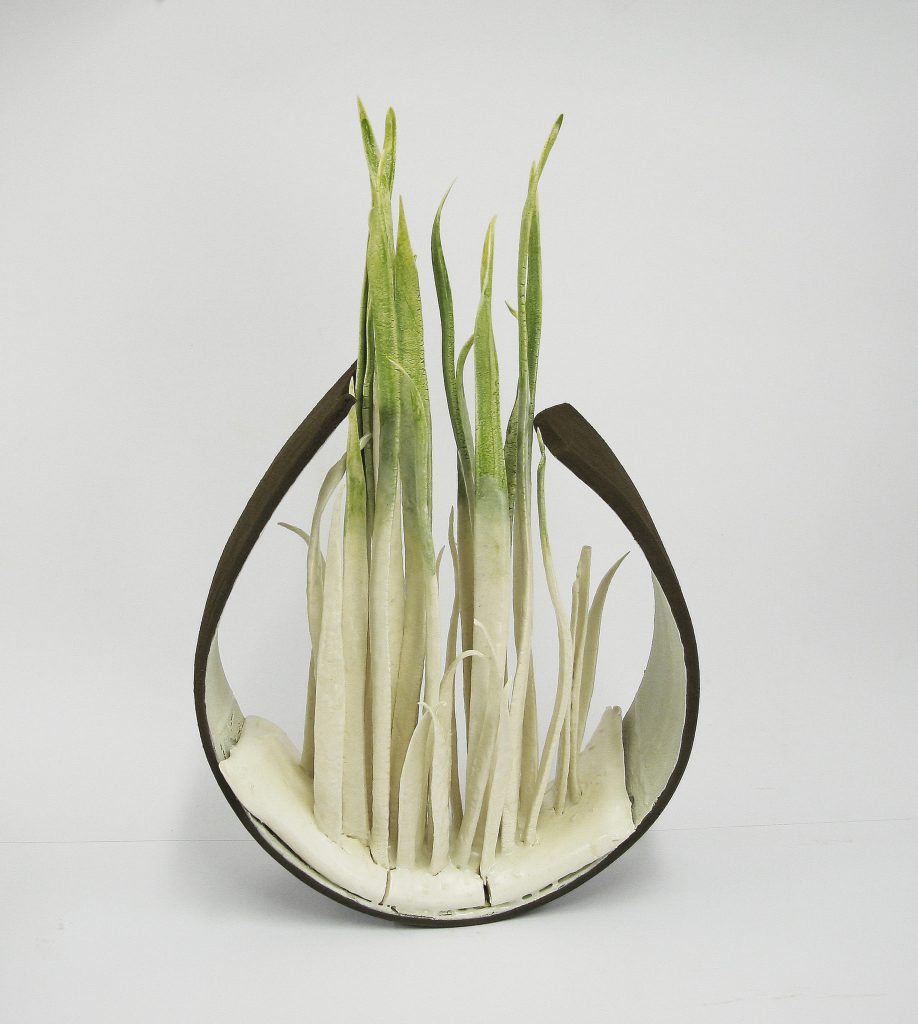
Círculo Mortal Ártico
In “Domar essence 2”, I want to convey mutability of vegetation in urban geometric structures until its own physiognomy.
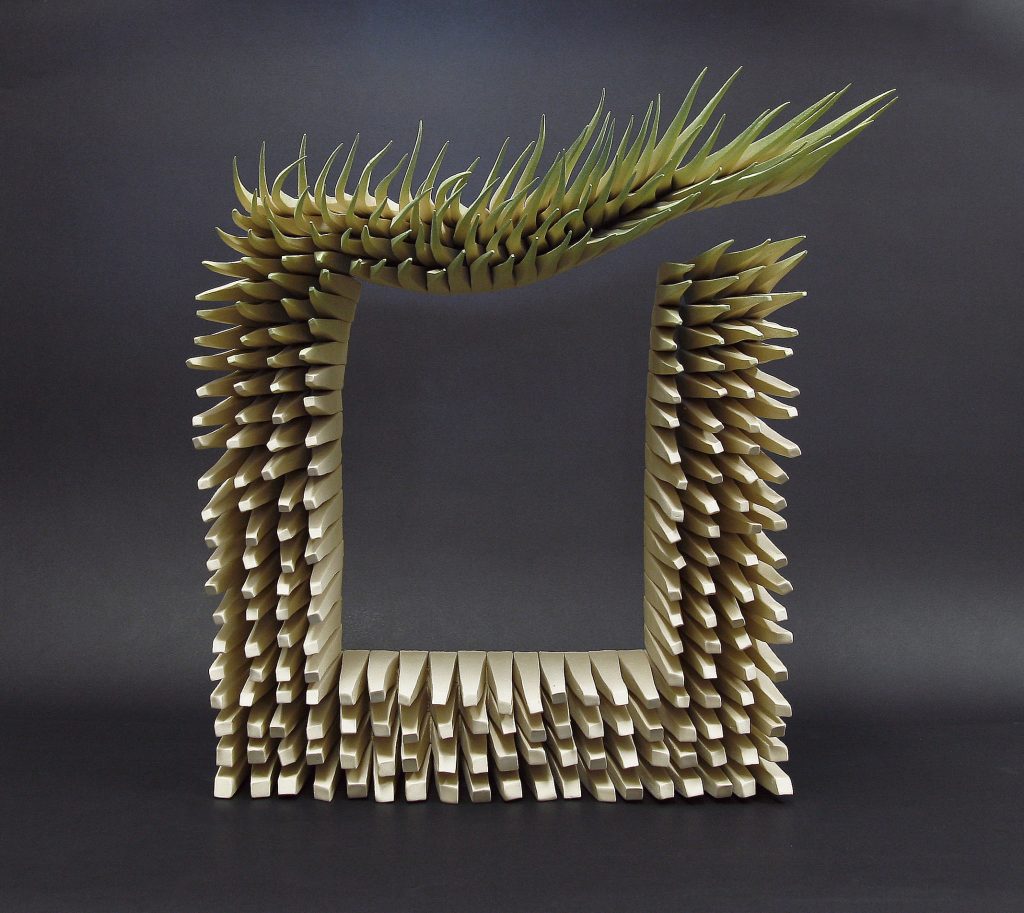
Domar Esencia 2
In cities the vegetation is delimited and is deprived from his freedom, so we humans deprive ourselves to enjoy it every day.
At other times the actual clay appears to trap. Explain using in ‘Libertad Provisional’
In “Provisional Freedom” I explain how the vegetation mutates by human degradation, sometimes losing their own physiognomy.
Here some outbreaks struggle to maintain their original appearance and get out of their own prison.
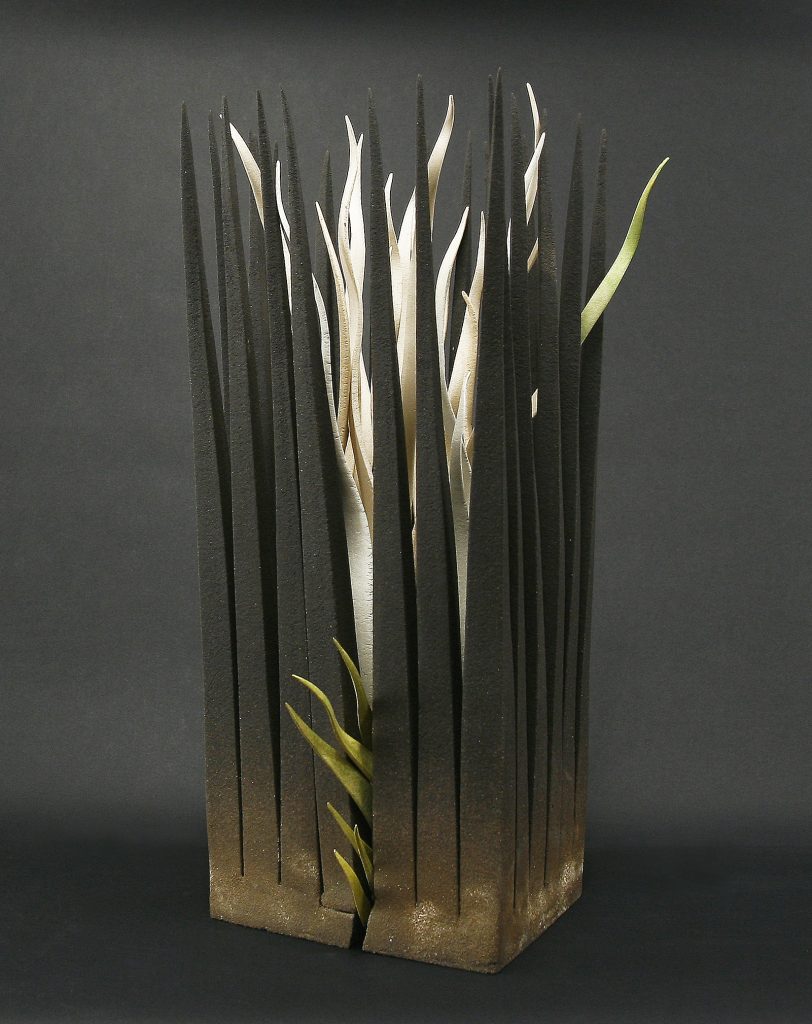
Provisional Freedo
Your work has a Japanese Ikebana feel, discuss.
I have not sought this meaning intentionally, but it is very curious that there are many professionals who value my floral art work and use it to draw on their creations.
A deep level of Ikebana is true that it is essential for me daily communion with nature. I was born in a city without almost nature around but when I had the opportunity to live in the countryside I found my fulfillment.
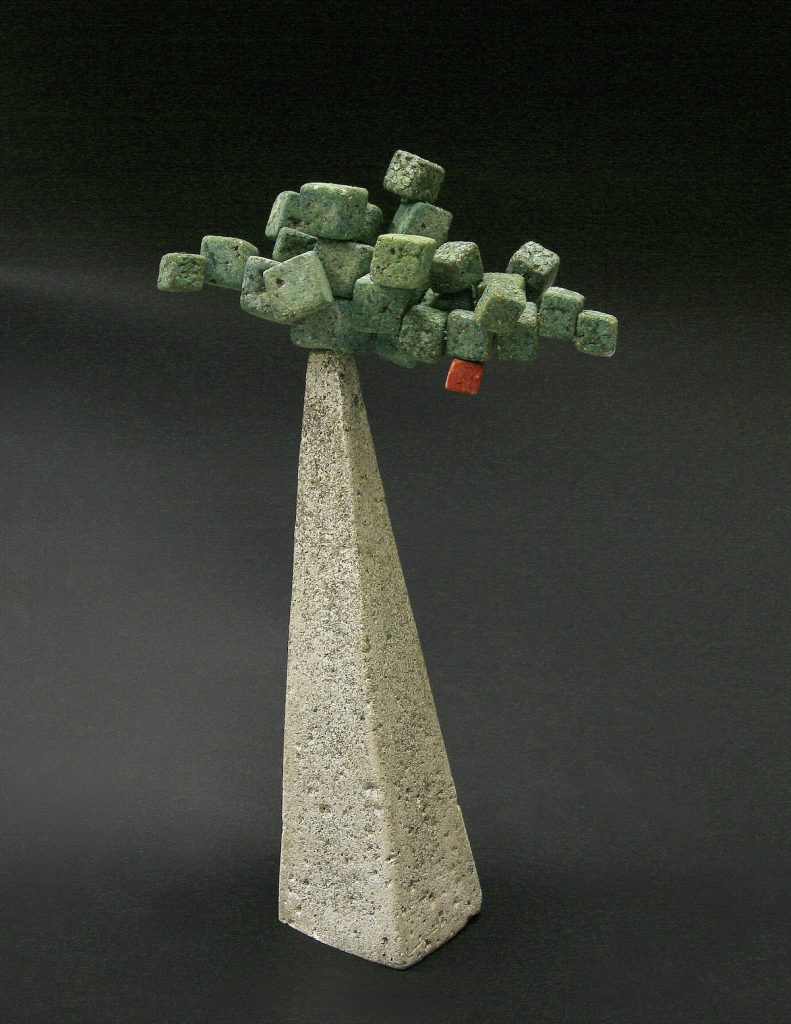
Size, how large can you work?
At this time, the oven with which I work is small. It measures 55 x 45 x 45 (cm). Of course my job is limited to its size. But I hope that, before long, I can have a larger oven that allows me to develop my work at the size that best consider.
Most of your pieces stand alone, discuss this and pieces that are a pair?
At this moment my work consists of a single work. Insconscientemente I plan according to the size of my oven, as I have just mentioned.
It is difficult to get inside two elements, and put them separately is not usually suitable for the final result of the work.

You are a member of the International Academy of Ceramics expand on the importance of this membership to you and other ceramic artists?
I had never thought to belong to the Academy but several members stressed submit my candidacy. It was a surprise for me to be elected. I’m very happy. This year I will participate for the first time in one of its International Congresses since coincidentally held in Spain, in Barcelona. This International Congress is held every two years in a different part of the world. I hope to meet many colleagues and discuss the future of our work on the concerns that we share, about our own personal experience…
The importance of this organism is precisely that: to bring together the views of each to make to Ceramics a major art in the eyes of the public because in the eyes of the artists it already.
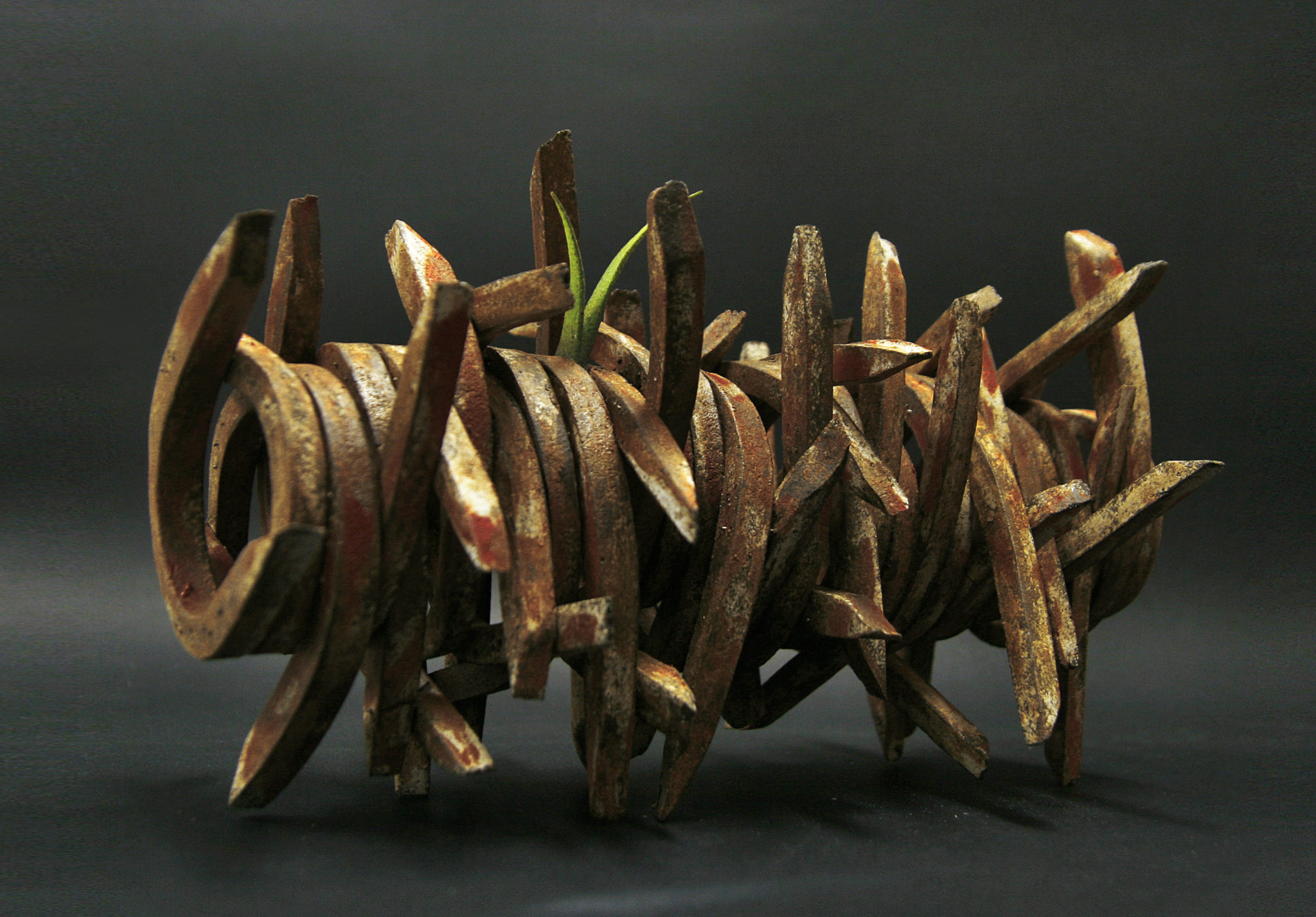
Contact details.
Alberto Bustos
Email: bustosescultura@yahoo.es
Alberto Bustos, Valladolid , Spain
Interview by Deborah Blakeley, July, 2016
Think a colleague or friend could benefit from this interview?
Knowledge is one of the biggest assets in any business. So why not forward this on to your friends and colleagues so they too can start taking advantage of the insightful information the artist has given?
Other artists you may be interested in:


